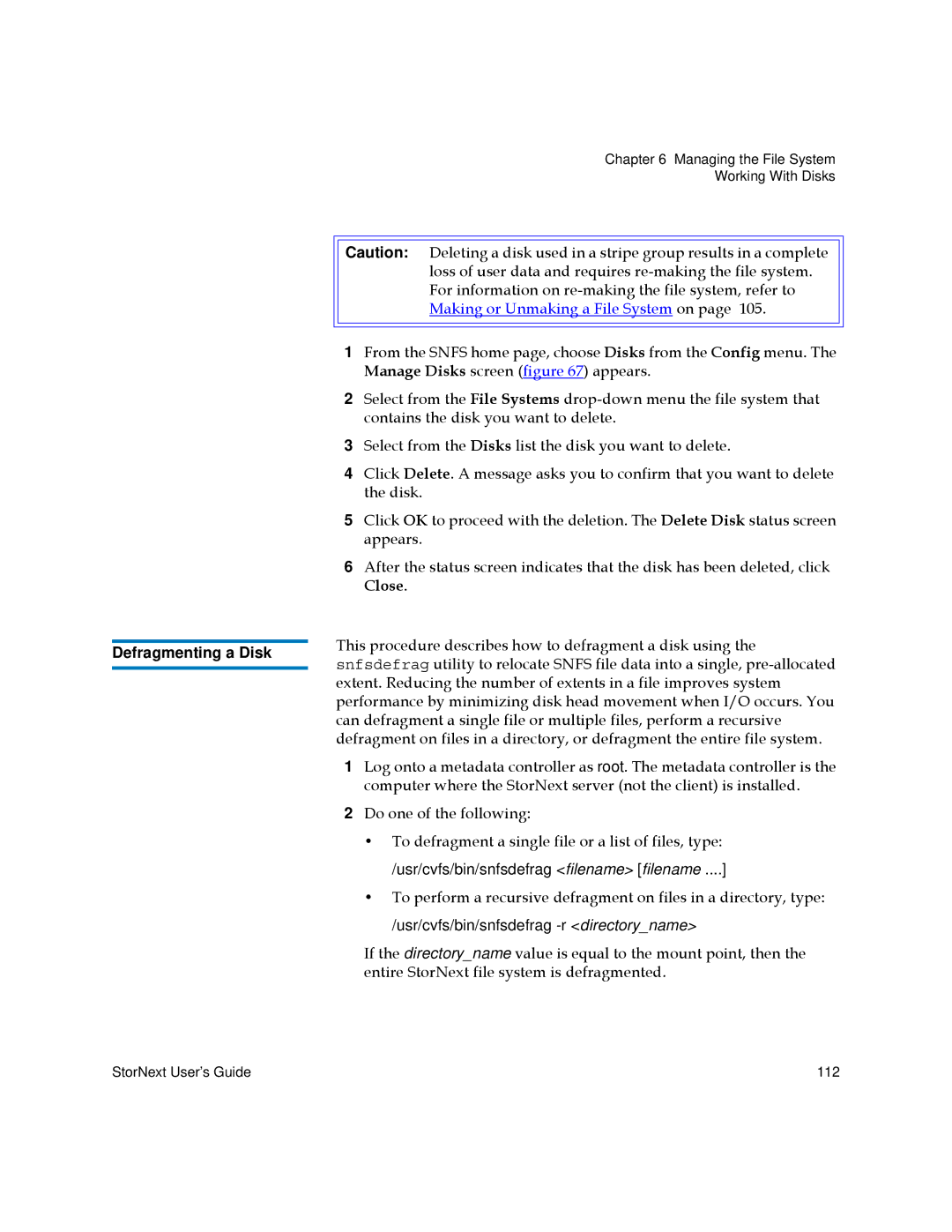|
|
|
| Chapter 6 Managing the File System | ||
|
|
|
| Working With Disks | ||
|
|
|
|
| ||
|
|
| Caution: Deleting a disk used in a stripe group results in a complete |
| ||
|
|
|
| loss of user data and requires |
| |
|
|
|
| For information on |
| |
|
|
|
| Making or Unmaking a File System on page 105. |
| |
|
|
|
|
|
| |
|
|
|
|
|
| |
| 1 | From the SNFS home page, choose Disks from the Config menu. The | ||||
|
|
|
| Manage Disks screen (figure 67) appears. | ||
| 2 | Select from the File Systems | ||||
|
|
|
| contains the disk you want to delete. | ||
| 3 | Select from the Disks list the disk you want to delete. | ||||
| 4 | Click Delete. A message asks you to confirm that you want to delete | ||||
|
|
|
| the disk. | ||
| 5 | Click OK to proceed with the deletion. The Delete Disk status screen | ||||
|
|
|
| appears. | ||
| 6 | After the status screen indicates that the disk has been deleted, click | ||||
|
|
|
| Close. | ||
|
| This procedure describes how to defragment a disk using the | ||||
Defragmenting a Disk | ||||||
| snfsdefrag utility to relocate SNFS file data into a single, | |||||
|
| |||||
|
| extent. Reducing the number of extents in a file improves system | ||||
|
| performance by minimizing disk head movement when I/O occurs. You | ||||
|
| can defragment a single file or multiple files, perform a recursive | ||||
|
| defragment on files in a directory, or defragment the entire file system. | ||||
| 1 | Log onto a metadata controller as root. The metadata controller is the | ||||
|
|
|
| computer where the StorNext server (not the client) is installed. | ||
| 2 | Do one of the following: | ||||
|
|
|
| • To defragment a single file or a list of files, type: | ||
/usr/cvfs/bin/snfsdefrag <filename> [filename ....]
• To perform a recursive defragment on files in a directory, type: /usr/cvfs/bin/snfsdefrag
If the directory_name value is equal to the mount point, then the entire StorNext file system is defragmented.
StorNext User’s Guide | 112 |
